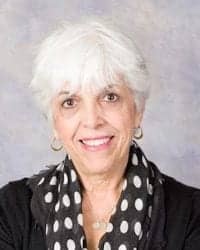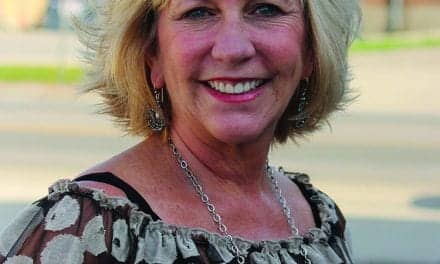Blog Page | February 2015 Hearing Review
The following is from Angela Loavenbruck’s October 14, 2014 article at her and Lolly Wigall’s Hearing Views blog at HearingHealthMatters.org. — David Kirkwood, HHTM editor
Ever since I agreed to join my illustrious colleagues writing for Hearing Views (a decision that coincided with a brief moment of insanity, given my hatred of writing deadlines), I’ve been thinking a lot about Lucy van Pelt, my all-time favorite cartoon character. She was pretty crabby. After 45 years of practicing audiology, there are some things that bring out the Lucy in me. I’m going to start small and look at our entire system of educating future audiologists.
Early Study Revealed Shortcomings of Audiology Education
Way back in 1987, I participated in an elegantly designed study that the American Speech-Language-Hearing Assn (ASHA) developed with the Educational Testing Service (ETS).1 A similar study was repeated in 1996.2 The studies were intended to define the tasks, knowledge, and skills needed for the Certificates of Clinical Competence. Note that the study was not designed to determine what was needed for licensure or for graduation from an accredited audiology program, but rather for the purchase of ASHA’s certificates in speech-language pathology and audiology.
The initial study brought together large numbers of audiologists from various practice settings who were asked to outline every task performed by audiologists, and then to delineate the knowledge and skills needed for each of those tasks. Following this massive under- taking, participants were asked at which point in the continuum of education the knowledge and skills should be obtained—in the academic program, in the clinical fellowship year (CFY), or as part of continuing education after the attainment of the certificate.
Three groups of participants (practicing audiologists, employers and supervisors of audiologists, and academics) were then asked how well the then-current educational system was working (ie, was the appropriate knowledge and skill set being attained at the appropriate place in the continuum?). So the questions were: What knowledge and skills do you need, where should you learn them, and where did you actually learn them?
The results were surprising—or maybe not. Practicing audiologists and supervisors and employers indicated that the vast majority of knowledge and skill should be attained in the academic program. Academics felt that less needed to be taught in the academic program, putting more responsibility on the CFY year and continuing education.
Finally, each group was asked how well the educational responsibilities were being carried out by the respective groups. Academic participants almost universally felt the university programs were doing a great job. However, practicing audiologists and their supervisors and employers felt very differently. They said that academic programs were producing graduates who had far less knowledge and skill than they needed to practice, and they said that too much of the educational process was being left to employers and continuing education.
The dramatically different perceptions among the various groups in the study were among the earliest indications that the master’s degree/CFY package was not sufficient for instilling the knowledge and skills that an entry-level audiologist needed.
The findings lent support to the audiologists who had begun talking about the need for a professional doctorate as the entry-level degree in the profession.
Still Crabby After All These Years…
So, why am I crabby about all of this? As a participant in the long ongoing struggle to improve and change the accreditation and culture of our audiology educational programs, I think today’s AuD programs still fall short in their content and rigor, and I believe that far too many mediocre programs are accredited. Too many students are left to find externships in hopes that unpaid supervisors will instill in them the knowledge and skill that should have been the responsibility of the program.
Employers are expected to pay young audiologists while simultaneously providing education and training that should have been completed under the auspices of the academic program. Furthermore, our professional audiology organizations are focused mostly on creating continuing education institutions to solve the problem, instead of investing fully in creating and enforcing rigorous standards for recruiting and educating future audiologists in our academic programs.
In my next several blogs, I will look more closely at these issues and their effects on how students are recruited, educated, and employed. As Lucy van Pelt said: “Look out, everybody, I’m going to be crabby for the rest of the day!”
References
1.Greenberg S, Smith IL. Evaluation of the Requirements for the Certificates of Clinical Competence of the American Speech-Language-Hearing Assn. New York: Professional Examination Service; 1987.
2.Tannenbaum RJ, Rosenfeld M. The Practice of Audiology: A Study of Clinical Activities and Knowledge Areas for the Certified Audiologist. Princeton, NJ: Division of Applied Measurement Research, Educational Testing Service; 1995.
Angela Loavenbruck, EdD, has been in private practice since 1976, and has served on numerous boards and committees for the New York State Speech-Language-Hearing Assn (NYS-SLHA), American Speech Language Hearing Assn (ASHA), Academy of Doctors of Audiology (ADA), and American Academy of Audiology (AAA), and was president of NYS-SLHA and AAA. She also was the first chair of the Accreditation Council for Audiology Education (ACAE) and co-wrote (with Jane Madell, PhD) the first textbook for dispensing audiologists, Hearing Aid Dispensing for Audiologists, A Guide for Clinical Service (Grune & Stratton, 1981).
Original citation for this article: Loavenbruck, A. The Crabby Audiologist: Who’s Teaching Whom? Hearing Review. 2015;21(2):12.





